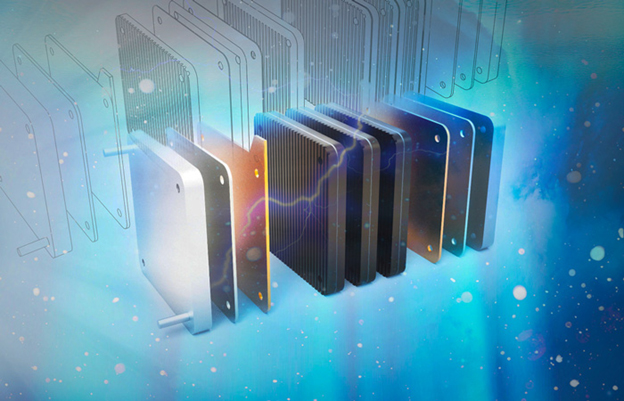Selecting the right materials for your fuel cell can make all the difference in achieving optimal performance and durability. As fuel cells continue to rise in prominence across industries, understanding the key properties of the metals involved is crucial.
Here’s a quick guide to help you make the best choice.
- Consider Corrosion Resistance
Fuel cells operate in highly corrosive environments, so choosing metals that can withstand these conditions is essential.Nickel 200 and Nickel 201 are excellent choices due to their superior corrosion resistance. Additionally, 310 Stainless Steeland 316L Stainless Steel, both containing a high nickel content, offer strong resistance to corrosion and high temperatures, making them ideal for demanding fuel cell applications.
- Think About Thermal Stability
Fuel cells get hot—very hot. The metals you choose need to maintain their structural integrity under extreme temperatures. This is where the thermal stability ofaustenitic stainless steels shines. With the ability to withstand high thermal stress, these metals ensure your fuel cell continues to perform reliably, even under the most challenging conditions.
- Focus on Precision and Efficiency
Efficiency in fuel cells often comes down to the precision of the materials used. Bipolar plates, critical components of fuel cells, require tight tolerances and flatness to optimize power generation. At Ulbrich, precision-rolled alloys are processed to exact specifications, ensuring yourfuel cellsoperate at peak efficiency by allowing for more power-generating membranes to be stacked in a compact space.
- Don’t Forget Secondary Processing
Beyond selecting the right alloy, secondary processes like surface enhancement are key to extending the lifespan and performance of your fuel cell components. You need advanced coatings and finishes that further improve corrosion resistance and overall durability, helping your fuel cells function better and last longer.
Ulbrich’s Fuel Cell Metals Review
Ulbrich‘s portfolio for fuel cell applications includes materials such as Nickel 200, Nickel 201, 310 Stainless Steel, and 316L Stainless Steel. Each of these metals offers distinct advantages:
- Nickel 200/201: Known for excellent corrosion resistance and good thermal and electrical conductivity, these are often used in high-temperature environments crucial for fuel cells.
- 310 Stainless Steel: This alloy has a high chromium and nickel content, making it highly resistant to oxidation and suitable for extreme temperatures (up to 2000°F) and cryogenic applications.
- 316L Stainless Steel: Its molybdenum content provides exceptional resistance to chloride ion corrosion, making it ideal for more corrosive fuel cell environments.
These materials are further enhanced through advanced secondary processing, like surface finishes and coatings, which extend durability and operational life.
Real-World Use Cases & Applications
Ulbrich’s metals are used in various sectors where fuel cells are gaining traction, including automotive, power generation, electronics, and aerospace. Nickel 200/201 finds use in demanding applications that require superior chemical stability and electrical conductivity, such as hydrogen electrolyzers. 310 Stainless Steel, with its high-temperature tolerance, is employed in fuel cells designed for continuous operation under extreme heat, such as stationary power generators and industrial kilns. Ulbrich’s offerings are also critical in developing bipolar plates used in PEM (Proton Exchange Membrane) fuel cells, which are pivotal for transportation and clean energy systems.
Cost & Value Analysis
Ulbrich’s products are priced higher due to their specialized nature and high-precision manufacturing processes. However, the value these materials provide in terms of corrosion resistance, thermal stability, and longer service life in harsh environments justifies the investment. Compared to lower-cost alternatives, such as traditional stainless steel alloys or untreated metals, Ulbrich’s precision-rolled products offer superior durability and efficiency, leading to long-term cost savings in maintenance and operational downtime.
Comparison to Competing Products
When compared to competing fuel cell material providers, Ulbrich stands out in a few critical areas:
- Customization & Precision: Ulbrich’s ability to meet highly specific customer requirements through precision rolling and advanced surface treatments gives it a competitive edge. This level of precision is not always available from other suppliers.
- Range of Metals: While competitors may specialize in one or two metals for fuel cell use, Ulbrich offers a broader range of alloys (Nickel 200/201, 310 SS, 316L SS) catering to diverse industrial needs.
- Secondary Processing: Ulbrich’s secondary coating and finishing services further distinguish it. They allow for enhanced corrosion resistance and lifespan extension, making them ideal for applications that require long-term reliability.
Environmental Impact Assessment
The materials provided by Ulbrich contribute to lower carbon emissions in the industries where they are used, particularly in the clean energy and automotive sectors. The longer lifespan of their metals means less frequent replacement and waste generation. Furthermore, their precision-rolled products help fuel cells operate more efficiently, lowering energy consumption. However, stainless steel and nickel production do come with environmental costs, such as mining impacts and energy-intensive manufacturing. Yet, using these metals in fuel cells supports the broader transition to hydrogen-based energy systems, reducing reliance on fossil fuels.
Expert Opinions & Analysis
A 2021 critical review of materials for solid-oxide fuel cells (SOFC) highlights that metals with high oxidation resistance and minimal ionic conductivity losses, like those provided by Ulbrich, are pivotal in addressing operational efficiency and longevity issues in fuel cells, especially under extreme conditions. This positions Ulbrich’s products favorably within the market for SOFCs and other fuel cell types (SpringerLink)(MDPI).
In addition, an environmental assessment of materials used in hydrogen technologies stresses the importance of sustainability and lifecycle impacts. Ulbrich’s use of stainless steel and nickel alloys aligns with growing trends toward recyclability and lower environmental impacts. Their materials fit within the broader hydrogen economy’s goals of reducing dependency on rare or high-impact materials, which is increasingly demanded by both regulators and consumers (MDPI).





